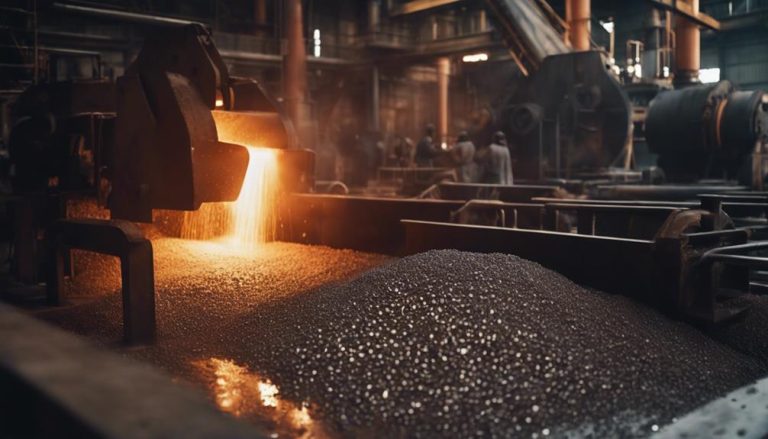
From Raw Materials to Finished Product: The Journey of Steel Manufacturing
Steel manufacturing involves a detailed process starting with the selection of raw materials like iron ore, coal, and limestone, impacting efficiency and cost-effectiveness. Iron is extracted through methods like blast furnace or DRI before refining into steel using techniques such as the Bessemer process. Various casting methods then shape the molten steel into forms like billets or slabs, with the product formulation determining final properties. Efficient distribution via trucks, trains, ships, and pipelines guarantees timely delivery to sectors like construction and automotive. The journey from raw materials to finished steel products is intriguing and essential for diverse industries to thrive.
Key Takeaways
- Raw materials selection includes iron ore, coal, and limestone for steel production efficiency.
- Iron is extracted from ore using blast furnace or Direct Reduced Iron methods.
- Steelmaking processes refine pig iron into steel with controlled properties.
- Casting molten steel into forms like billets and slabs for further processing.
- Product formulation determines steel grade properties like strength and corrosion resistance.
Raw Material Selection
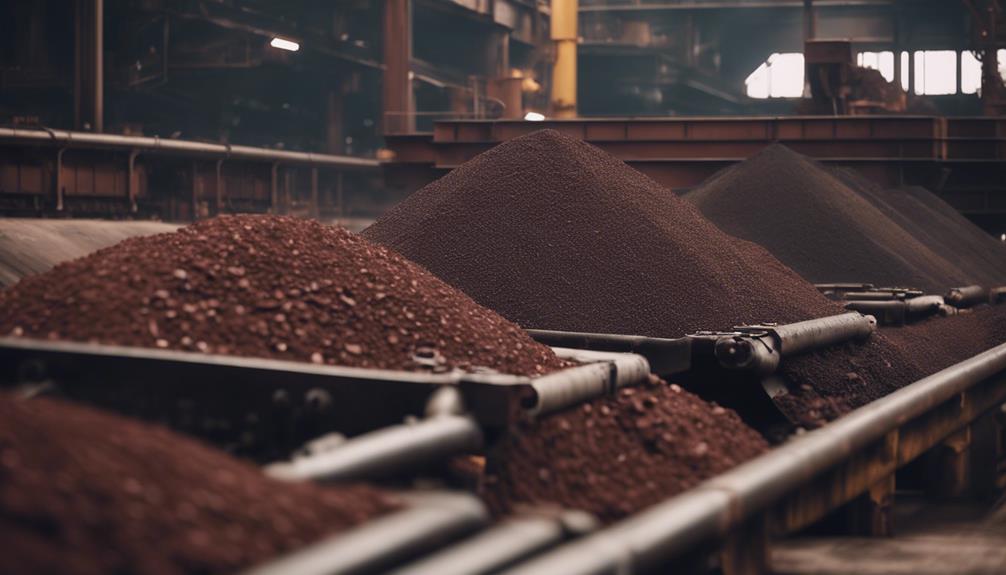
The foundation of steel manufacturing lies in the meticulous selection of raw materials, primarily iron ore, coal, and limestone, essential for achieving the desired properties and quality of the final steel product. Iron ore, extracted in forms such as hematite and magnetite, serves as the primary source of iron for steelmaking processes. Coal, an essential ingredient in steel production, provides the necessary carbon content for steel formation. Additionally, limestone, a fluxing agent, helps remove impurities during the steelmaking process.
The selection of high-quality raw materials is important as it directly impacts the efficiency and cost-effectiveness of steel manufacturing. Steel manufacturers carefully monitor and control the quality and composition of these raw materials to meet industry standards and specific product specifications. By ensuring the purity and consistency of the raw materials used, manufacturers can produce steel with the desired strength, durability, and other essential properties required for various applications. The meticulous selection and management of these raw materials are fundamental to the successful production of high-quality steel products.
Iron Production
With the selection of high-quality raw materials secured, the focus now shifts to the pivotal stage of iron production in the steel manufacturing process.
Iron production involves extracting iron from iron ore using methods such as the blast furnace or Direct Reduced Iron (DRI) process. In the blast furnace method, a mixture of iron ore, coke, and limestone is heated to produce molten iron, commonly referred to as pig iron.
On the other hand, the DRI method utilizes natural gas or coal to reduce iron ore to a solid state before subsequent processing. This stage is vital in steel manufacturing as iron serves as the foundational material for producing steel.
The various iron production techniques offer flexibility in adjusting chemical compositions and properties to meet the specific requirements of different steel grades. Iron production marks a significant step in the steel manufacturing journey, setting the stage for the subsequent steelmaking process.
Steelmaking Process
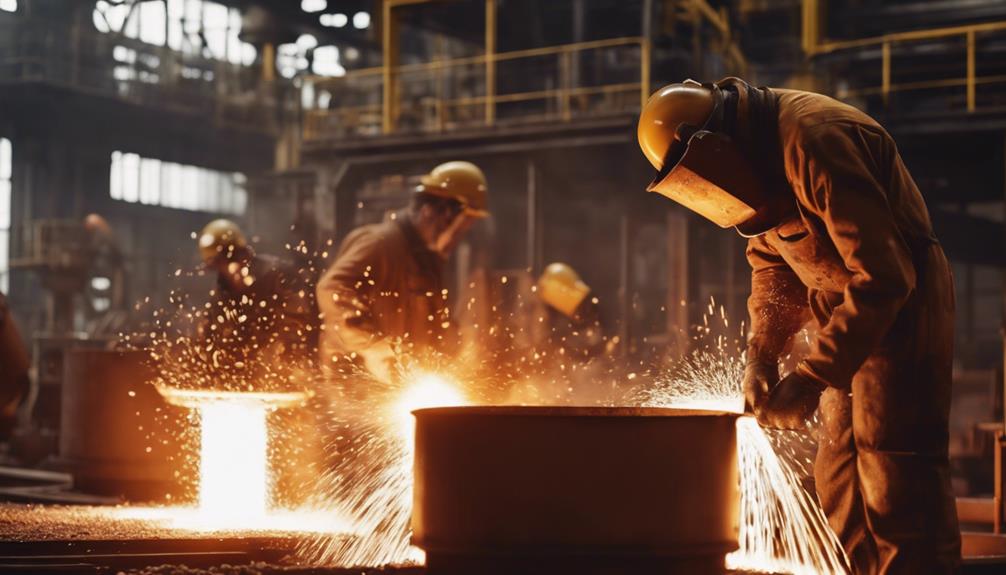
Starting the transformation of pig iron into steel involves intricate refining processes utilizing methods such as the Bessemer process or electric arc furnace. Steelmaking is the pivotal stage where the chemical composition of pig iron is adjusted, and impurities are removed from the molten metal.
Techniques like ladle-furnace and degassing play a significant role in achieving the desired steel properties. The goal of steelmaking is to produce high-quality steel that meets specific standards and requirements for various industrial applications. During the steelmaking process, careful monitoring and control of temperature, carbon content, and other alloying elements are essential to guarantee the final product’s quality.
Once the steelmaking process is complete, the resulting steel is ready for casting and further processing to create a wide range of products used in construction, automotive, machinery, and other industries. Steelmaking is a complex and precise operation that plays a crucial role in the manufacturing of steel products worldwide.
Casting and Molding
After the steelmaking process refines pig iron into steel, the molten steel is cast into various forms like billets, slabs, or blooms for further processing during the casting and molding stage.
Continuous casting machines play an essential role in this stage by solidifying the molten steel into desired shapes with high efficiency. Various casting techniques are employed to guarantee precise dimensions and high-quality standards in the final steel products.
These casting processes are pivotal as they transform semi-finished steel into usable forms for different industries. Continuous casting technology not only minimizes material waste but also enhances the overall production efficiency in steel manufacturing.
Product Formulation
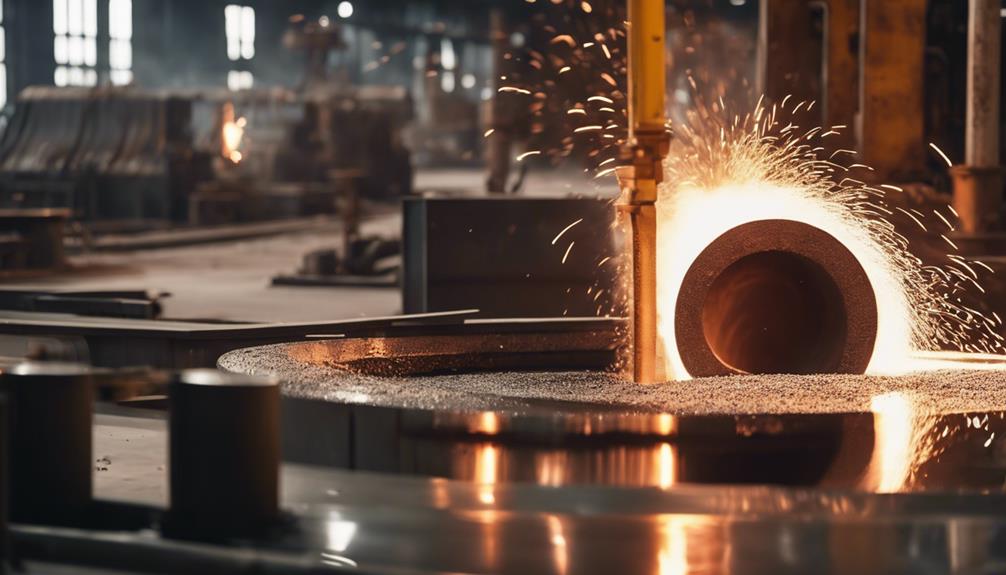
In the domain of Steel Manufacturing, the process of product formulation entails the precise determination of the chemical composition and essential properties required for the ultimate steel product. Steel grades are formulated by incorporating specific elements such as carbon, manganese, and various alloying elements during the steelmaking process.
The formulation of different steel products is tailored to meet specific end-use requirements, including applications in automotive parts, construction materials, or consumer goods. Decisions made during the formulation stage greatly influence the strength, ductility, hardness, and corrosion resistance of the final steel product.
To optimize the product formulation process, advanced analytical techniques and computer simulations are employed in steel manufacturing facilities. By carefully selecting the chemical composition and adjusting product properties, manufacturers can produce a wide range of steel grades with varying characteristics to meet the diverse needs of industries and consumers.
Quality Control Measures
The implementation of stringent quality control measures is essential in ensuring the integrity and reliability of steel products throughout the manufacturing process. Quality control in steel manufacturing involves testing for chemical composition, mechanical properties, and surface defects.
Techniques such as spectroscopy, hardness testing, and ultrasonic testing are utilized to assess steel quality accurately. Adherence to international standards like ISO 9001 and ASTM specifications is important to maintaining quality in steel production.
These quality control processes monitor the entire steel manufacturing process, starting from raw material inspection to finished product testing. By conducting thorough chemical composition testing and mechanical properties testing, steel manufacturers can guarantee that their products meet international standards compliance, preventing defects, ensuring product reliability, and meeting customer requirements in the steel industry.
These measures play a significant role in delivering high-quality steel products to the market.
Finishing Techniques
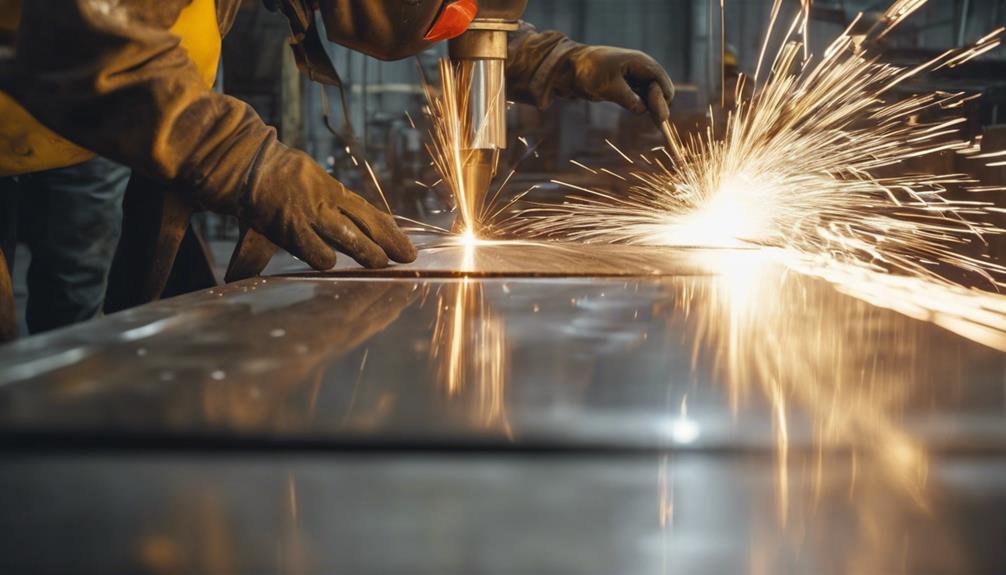
With meticulous attention to detail, steel manufacturers employ a variety of finishing techniques to enhance the properties and aesthetics of their steel products. Secondary forging techniques play an important role in steel finishing, encompassing processes such as coating, thermal treating, and machining to improve the mechanical and physical properties of the steel. Common methods like pressing, drilling, and riveting are employed during secondary forging to shape the steel products according to specific requirements.
Coating processes are essential to steel finishing, as they not only enhance the corrosion resistance of the final product but also contribute to its aesthetic appeal. Different types of coated steel products are achieved through specific coating techniques applied during the finishing stage. Advanced technologies like High Yield Quenched and Self Tempered have been instrumental in ensuring superior quality in long steel products during the finishing process. These techniques collectively result in steel products that meet high standards of durability, functionality, and visual appeal.
Product Distribution
Steel products undergo a well-coordinated distribution process involving a network of manufacturers, distributors, and retailers to reach global markets efficiently. Once manufactured in the steel manufacturing factory, these products are distributed through various channels such as steel service centers, construction companies, and industrial manufacturers.
The distribution of steel products involves transportation via trucks, trains, ships, and pipelines to reach diverse markets worldwide. Distributors play a pivotal role in ensuring the timely delivery and effective supply chain management of these products.
By utilizing efficient distribution processes, the steel industry can meet the varied demands of sectors like construction, automotive, and infrastructure development. The distribution of steel products is essential for catering to the needs of different industries and ensuring a steady supply of materials for ongoing projects.
Through a well-organized distribution network, steel manufacturers can effectively deliver their products to customers around the globe, supporting various sectors’ growth and development.
Frequently Asked Questions
What Are the Steps in the Manufacturing of Steel?
The steps in the manufacturing of steel involve raw material acquisition, ironmaking, steelmaking, casting, forming, and shaping. Raw materials like iron ore, coke, limestone, and scrap steel are transformed through a series of processes to create the final steel products.
What Is the Process Route of Steelmaking?
The steelmaking process route involves acquiring raw materials, ironmaking, steelmaking, casting, and forming. Iron ore is processed in blast furnaces, refined into steel, cast into billets, slabs, or blooms, and shaped through techniques like rolling and forging to produce finished steel products.
What Are the Raw Materials for Steel Manufacturing?
The primary raw materials for steel manufacturing are iron ore, metallurgical coal, and limestone. Iron ore provides the base material for steel, coal supplies carbon for the process, and limestone acts as a flux to remove impurities.
What Are the Finished Products of the Steel Industry?
Finished products of the steel industry encompass flat plates, long bars, tubular components, and structural shapes, vital across automotive, aerospace, energy, and consumer sectors. Steel’s durability and strength make it essential in constructing buildings, manufacturing machinery, and creating transportation vehicles.
Conclusion
To summarize, the journey of steel manufacturing involves a meticulous process from raw material selection to product distribution. Each step, from iron production to steelmaking, casting, molding, formulation, quality control, and finishing techniques, plays a vital role in ensuring the final product meets industry standards.
The careful coordination of these processes results in high-quality steel products that are essential for various industries worldwide.
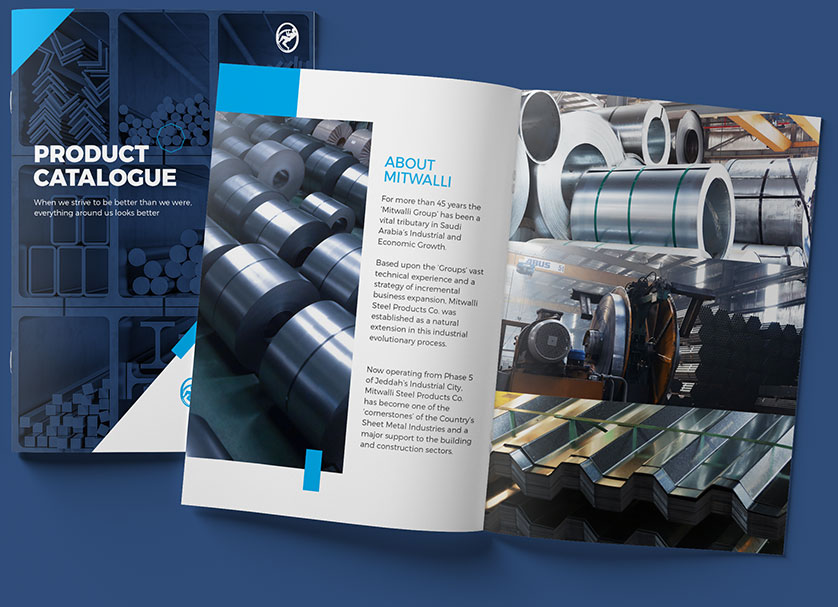
Add New Comment
Deprecated: File Theme without comments.php is deprecated since version 3.0.0 with no alternative available. Please include a comments.php template in your theme. in /home/wwwmsp/public_html/wp-includes/functions.php on line 6121